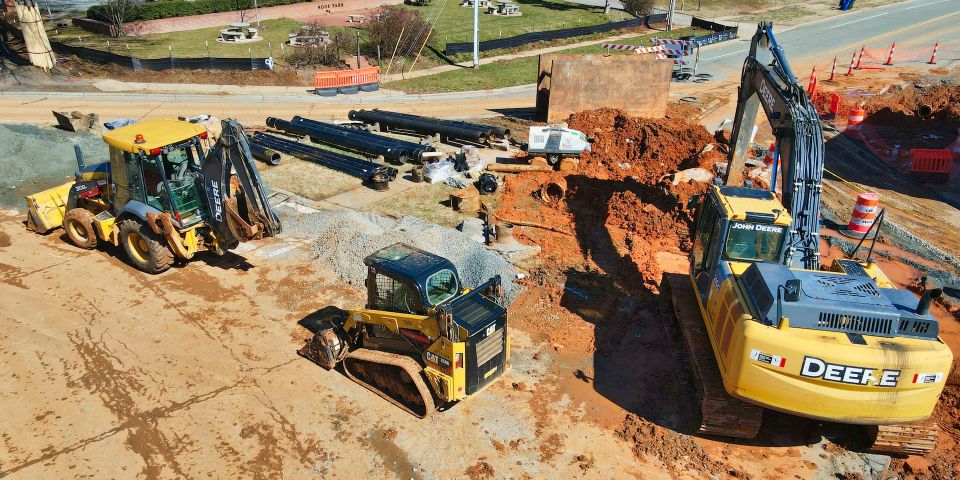In the world of construction, challenging soil conditions can present formidable obstacles to the success of any project. However, advancements in soil improvement technologies, such as polymer stabilization, offer innovative and sustainable solutions to overcome these challenges. As soil improvement is crucial to the durability, longevity, and stability of constructed structures, understanding and implementing polymer stabilization techniques can significantly enhance construction project outcomes.
This blog post will provide a comprehensive overview of polymer stabilization, a cutting-edge soil improvement technique. We will discuss the many advantages polymer stabilization offers over traditional stabilization methods and explore the soil conditions and applications ideally suited for this technology. Additionally, we'll provide a step-by-step guide to assessing and implementing polymer stabilization solutions to address subpar soil conditions effectively.
Furthermore, we'll showcase Terra-Firma Stabilization & Reclamation's extensive expertise in polymer stabilization, emphasizing our commitment to providing tailored solutions that result in optimal project outcomes and adhering to sustainable construction practices. Lastly, we'll share real-life examples of successful polymer stabilization projects completed by Terra-Firma Stabilization & Reclamation, demonstrating the transformative potential of this innovative soil improvement technique.
An Overview of Polymer Stabilization for Soil ImprovementPolymer stabilization is a revolutionary soil improvement technique that involves the application of liquid polymers mixed with water to alter and enhance the properties of soil, such as strength, stability, and water resistance. These liquid polymers are long-chain molecules that form a strong, flexible, and cohesive bond with the soil particles, resulting in improved load-bearing capabilities and resistance to moisture and erosion.
Advantages of Polymer Stabilization Over Traditional Stabilization TechniquesPolymer stabilization offers several compelling advantages over traditional soil stabilization methods, such as lime, cement, or mechanical stabilization:
1. Environmental friendliness: Polymer stabilization requires significantly lower amounts of raw materials compared to traditional techniques, reducing the environmental impact and energy consumption associated with sourcing and processing these materials.
2. Reduced construction time: The curing time for polymer-stabilized soil is much shorter than that of traditional methods, resulting in accelerated construction schedules and reduced downtime.
3. Lower costs: With fewer raw materials and a faster construction timeline, polymer stabilization often leads to lower overall project costs, making it an attractive option for developers and contractors.
4. Versatility: Polymer stabilization is suitable for a wide range of soil types and applications, making it an incredibly versatile solution to diverse soil improvement challenges.
Soil Conditions and Applications Ideal for Polymer StabilizationPolymer stabilization is an adaptable technique suitable for various soil types and construction applications. Ideal circumstances for employing polymer stabilization include:
1. Expansive Soils: Soils with high clay content can experience significant volume changes with moisture variations, causing instability. Polymer stabilization can treat expansive soils to reduce swelling and enhance stability.
2. Subgrade Stabilization: Strengthening subgrade soils with polymer stabilization can lead to improved load-bearing capacity and reduced pavement thickness requirements, saving on material costs.
3. Erosion Control: Polymer stabilization enhances soil erosion resistance, making it ideal for sloping terrain or areas prone to erosion due to water flow and runoff.
4. Dust Control: Treated soil surfaces with polymer stabilization can resist dust generation, making it a practical solution for unpaved roads, construction sites, and other areas requiring dust control measures.
Assessing and Implementing Polymer Stabilization SolutionsImplementing polymer stabilization to address challenging soil conditions requires a systematic approach:
1. Soil Analysis: Conduct a thorough analysis of the existing soil conditions, collecting samples for laboratory testing to determine the suitability of polymer stabilization.
2. Polymer Selection: Based on the soil analysis results, select the most appropriate polymer formulation to achieve the desired soil improvement.
3. Polymer Application: Mix the chosen polymer with water and apply the solution to the soil, ensuring proper penetration and distribution for optimal stabilization results.
4. Compaction and Curing: After polymer application, compact the treated soil to achieve the desired density and allow for curing, which can range from a few hours up to a couple of days, depending on the specific polymer and conditions.
Terra-Firma Stabilization & Reclamation's Expertise in Polymer StabilizationTerra-Firma Stabilization & Reclamation is a leader in providing polymer stabilization solutions for diverse soil improvement needs. Our highly skilled team, armed with in-depth industry knowledge, is committed to delivering tailored polymer stabilization strategies that yield sustainable, cost-effective project outcomes. Collaborating with Terra-Firma Stabilization & Reclamation ensures access to advanced soil improvement technologies and expert project management, resulting in superior quality, increased efficiency, and environmentally responsible construction practices.
Real-life Examples: Successful Polymer Stabilization Projects by Terra-Firma Stabilization & ReclamationThe transformative potential of polymer stabilization is evident in numerous successful projects completed by Terra-Firma Stabilization & Reclamation:
1. Highway Subgrade Stabilization: Terra-Firma Stabilization & Reclamation employed polymer stabilization to address weak, problematic subgrade soils on a major highway project, resulting in significant time and cost savings while ensuring a stable, long-lasting foundation.
2. Erosion Control for Stream Bank: A stream bank threatened by erosion was expertly treated by Terra-Firma Stabilization & Reclamation using polymer stabilization to prevent further damage and protect nearby structures and ecosystems.
3. Industrial Facility Dust Control: Our team utilized polymer stabilization to stabilize and manage dust on an industrial facility's unpaved surfaces, contributing to a cleaner, safer environment for workers and minimizing the site's environmental impact.
ConclusionPolymer stabilization is a powerful and environmentally responsible solution for addressing challenging soil conditions and advancing sustainable construction practices. By understanding the benefits, applications, and implementation of polymer stabilization and partnering with industry experts like Terra-Firma Stabilization & Reclamation, civil engineers, construction contractors, developers, and project managers can confidently tackle soil improvement challenges and elevate the potential of their construction projects. Embracing
soil stabilization is essential for creating a more efficient, cost-effective, and sustainable future in the construction industry.

